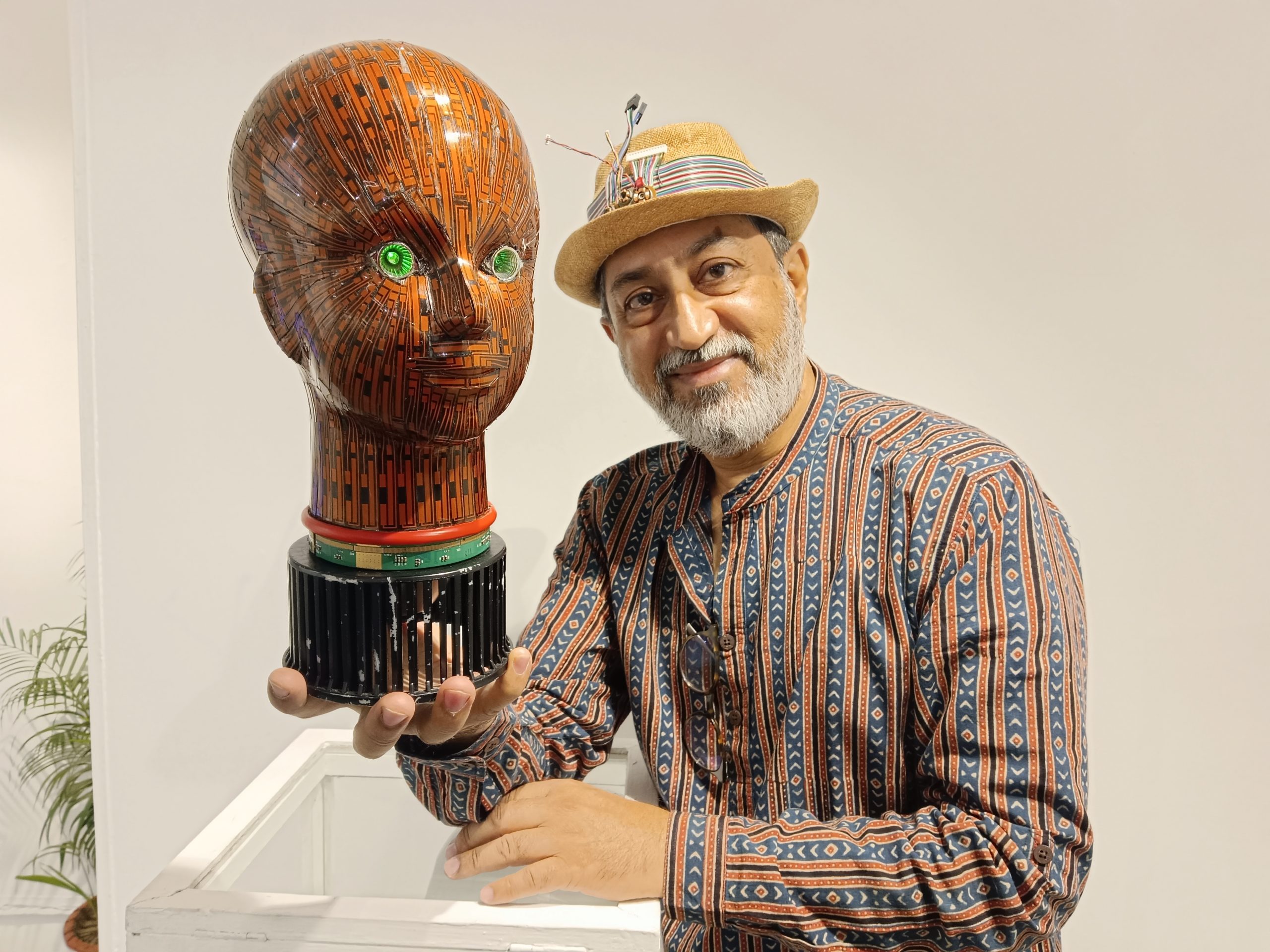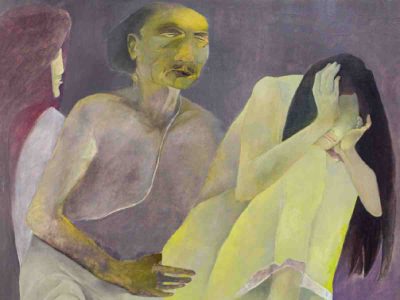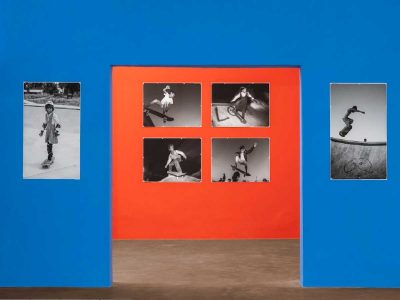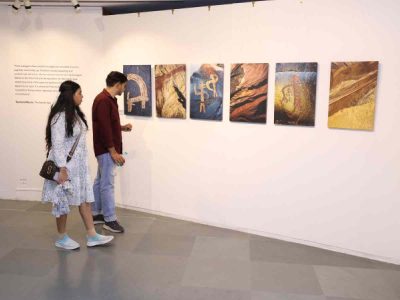One cannot imagine that old Nokia keypad phones, popular in early 2000s, could be anything more than a gateway to a nostalgic past.
Yet, for eco-artist Vishwanath Mallabadi Davangere, they are cherished components of a larger artwork, a big sphere that he lovingly calls “Reminiscence”.
Davangere, who has also worked at Nokia as UI/UX designer, reflects on the art piece.
“I have tried giving a second life to these phones, which were once a cherished possession for people who are now in their 60s or 70s,” he says.
He has bought 2,000 such phones from scrap dealers for a project with Delhi metro.
In his exhibition being held at India International Centre till December 3, there are more such intriguing art pieces, each of them created from electronic waste, and often featuring mythological figures such as Kamadhenu or Nefertiti.
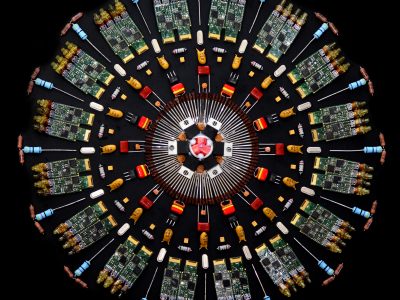
Claiming to be someone with “no special talents” but “passionately curious”, Davangere’s first education in art started in his early childhood in the presence of his father, Shambhu Mallabdi, a renowned sculptor and painter.
“Art is a legacy in my family. I was surrounded by painters, sculptors, and designers all through my childhood. So, the atmosphere I grew up in was all about art, just like it was in the case of famous dancer Birju Maharaj,” he smiles.
Originally from Chitradurga in Karnataka, Davangere was brought up in Delhi and earned a degree in Applied Arts from University of Delhi. However, his fascination for art grew with something that is often considered far from the world of art: technology.
“I was extremely curious about the functionalities of various gadgets. When I was a child, I even broke a TV because I wanted to see what was inside it,” he remembers.
“During my college years, I used to visit Kabadi Bazaar in Delhi to buy different gadgets to see how they work and what was inside them.”=
After college, Davangere joined NDTV as a video graphic designer.

However, his fascination with technology became a professional endeavour when he started working with Wipro Technologies, where he would largely involve himself with Research and Development despite being a senior executive in Talent Transformation. Here, he would dismantle computers, laptops, radios, DVDs, VCRs, set-top boxes, old landlines and cordless phones.
“In all these IT firms, I was surrounded by engineers, testers, coders, and programmers. As I learned more about technology, I realised that it is better not to restrict it. I started to create a fusion between art and technology. My first ever work of art was a spider made from different e-waste components that I had collected,” he says.
He has realised his vision of fusion between art and technology. For instance, his interpretation of Van Gogh’s Starry Nights is a fascinating artwork made entirely of 20,000 colourful transistors.
“If you see Van Gogh’s paintings, each stroke of paint is very unique. For me, each stroke is a transistor,” he says. “It was extremely difficult to obtain different colours for this artwork, because transistors only come in a limited number of colours. However, when it was finished, I was extremely impressed with my work.”
His favourite work of art is a piece he calls “Future City”.
It is a set of tall skyscrapers made of heat sinks, spread across a space to depict a modern city.
“If you look at a heat sink, each of them looks like a floor or an element of a building. I looked at all of them from an architectural perspective, measuring every heart sink and how they could represent a basement, restaurants, rooms, and other components,” he says.
But how does he visualise these works of art?
“I am very strong in art and design, but I am also equally strong in technology. If you keep on learning about different technological elements, then you can play with them. You would know about their size, characteristics, and texture to easily visualise them,” he says.
However, there are different precautions that he takes while creating his artwork.
“There are almost 10 to 15 types of e-waste. There are harmful fumes or gases that they emit. So, one needs to know about the nature of these waste products,” he says.
Known for sustainability, his artwork has garnered recognition all across the country and abroad. His work has been featured and showcased at the 1st International Data Science Conference for Sustainable Development Goals held in Hyderabad. Moreover, he has sold his work to different corporate offices and for government projects.
“Although my work is being recognised and sold at international level, it was never my priority. I believe that if you do your work with honesty, people will recognise it and it will be monetised,” he says.
In his exhibition at IIC, he is donning a hat with LED lights and interacts with each visitor, often taking pictures with them and explaining to them the idea behind his art.
“A lot of people call e-waste dirty. For me, such waste is not dirty. If you take necessary precautions due its hazardous nature, you can do extremely fascinating things with it,” he says.

